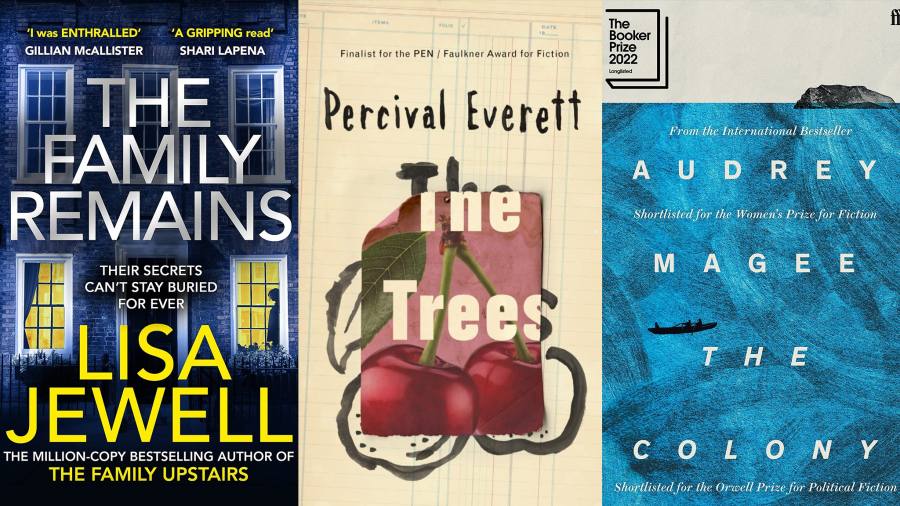James Patterson is one of the world’s best-selling living authors, having sold over 425 million books. But her career didn’t start in an English class, but rather as a summer assistant in a mental institution.
X
He worked the night shift of the hospital. And he often worked in the maximum security ward with patients on suicide watch. Until then Patterson, while a good student, did not read much. But he had to fill those long, boring hours at the hospital.
Patterson passed the time reading classics that exposed him to a wider world than his more parochial upbringing in a small town. Patterson, 75, was the youngest of five children who grew up in a modest, working-class family in Newburgh, NY
So working in a private, Harvard-affiliated facility with many wealthy and, in some cases, famous patients, changed him. And that forged a larger worldview that would make his storytelling richer.
“I think I had a small-town perspective,” he told Investor’s Business Daily. “But at the hospital, I came into contact with different kinds of people, wealthy patients, Harvard doctors. I was exposed to new possibilities.”
Capitalize on accidents like James Patterson
Patterson earned a bachelor’s and master’s degree in English. But he had no career goals in mind after graduation. The writing found it, though. He moved to New York and found himself in a writing job by accident.
“I knew I had to get a job. I thought about driving a taxi, but I had long hair at the time. When I went to the taxi garage for a job, the supervisor, who looked a bit like to Danny DeVito, said to me, “You hippie (expletive), get out of here.”
Patterson’s next stop was at a telephone sales company where the manager offered him a job and a warning, “He’s a soul killer.” Enough said.
But luck was with him. A friend heard that the J. Walter Thompson advertising agency was hiring junior copywriters. It was apparently the perfect start for a young man with two degrees in English. But people who were hiring wanted to see a portfolio. Patterson faced the dilemma: to get a job, you need experience, but you can’t get experience if no one hires you.
Patterson solved this problem. “In 10 days, I built a portfolio and they hired me,” he said.
Patterson: Take your luck
Patterson continued to seize the opportunity. Shortly after his arrival, the agency began losing clients. “They kept firing people, but I was earning so little that they weren’t paying to let me go,” he said.
Understaffed, Patterson “had the opportunity to write a lot of TV commercials. The kids that come in never got the right to TV,” he said. “It turned out that my instincts were pretty good and my job was simplified.”
Writing for television has led him to focus on what his audience wants and has helped him develop his style. “I write conversationally. I pretend there’s someone sitting across from me having a beer or drinking wine and telling story after story,” he said.
Find your next opportunity
Patterson became CEO of Thompson at age 38. But despite the added responsibility, he continued to work on his passion: fiction. He got up early and wrote in the morning before work, in the evening after work, and at his desk during lunch. But the hours didn’t bother him because he never considered writing fiction a job.
“I never believed that,” he said. “I wasn’t working for a living. For me, it was a game.”
It’s a trait recognized by Ned Rust, his editor at Little, Brown. “As his grandmother told him, ‘hungry dogs run faster,'” Rust said. “I’ve never known a human so voracious for his calling, which is storytelling. Maybe it has something to do with the fact that he doesn’t call it work. He calls it work. Game.”
Know when to be patient like Patterson
But success in fiction didn’t happen overnight. Thirty-one publishers rejected his first published novel, “The Thomas Berryman Number”.
He was, he said, not discouraged. He quotes fellow author John Updike, who said, “The willingness to risk excess in the name of one’s obsessions is what sets artists apart.”
“The rejections came in pretty quickly. They came in bunches. Several (publishers) said to send me your next book,” Patterson said. “It’s not like they’re saying ‘you’re wasting your time’.”
Ironically, this book won the Edgar, awarded by the Mystery Writers of America, for best first novel. And, yes, there were a lot of books after that. Sometimes two or three a year. The latest count provided by its publisher was 425 million books sold worldwide.
Tap Your personal history
Patterson’s first big hit was with “Along Came A Spider”, featuring one of Patterson’s best-known characters, Alex Cross. Cross, a forensic psychologist, became the hero of more than 25 Patterson thrillers.
But there’s an interesting – perhaps even surprising – revelation to his fans: Alex Cross was originally Alexis Cross. Cross was loosely based on someone Patterson had met.
Growing up, Patterson befriended a woman who worked as a cook at a small local restaurant. “I spent a lot of time with her and her family,” Patterson said. “They were smart and fun and I never forgot them.”
But despite her best efforts, “I just felt like a woman, (the character) just didn’t click.” Patterson adapted.
So Alexis became Alex. After the change, Patterson set out to write a long and detailed plan. But he found the outline quickly turned into a finished book. The experience of starting with a blueprint has become its signature style: several short chapters that drive the story forward.
Other book series followed, including the Women’s Murder Club series as well as Michael Bennett and NYPD Red.
Get a helping hand
But Patterson soon discovered he had another problem. He had so many ideas swirling around in his head that he called on other writers to help him.
He wrote detailed plans and others fleshed them out under his supervision. They would send pages back and forth to make sure the writer stays on track. He found them in part by going through the annual volume of “Best American Mystery Stories”. If he liked a writer’s work, he called them directly.
“I called (mystery writer) Brendan DuBois and said, ‘This is James Patterson.’ He hung up on me,” Patterson said. “He thought it was a joke. Since then, Brendan and I have written three full novels together.”
Rust says Patterson is constantly looking for ways to do more. “But one thing that I think people don’t know about him is what a good and steadfast human being he is.”
encourage reading
Patterson is not diligent just for writing. He brought his perseverance to encourage reading. That’s why he created his so-called Jimmy series of books for young readers.
It’s also why he created “Bookshots,” a 150-page series of less expensive adult titles. And that’s why he’s donated millions of dollars to reading causes, including those that support libraries and independent booksellers.
“Right now in this country only 45% of children are reading at the grade level, which is a shame, a tragedy,” Patterson said. “When I talk to groups of teachers, I say, ‘I’m here to save lives.'”
It works with the University of Florida to help boost literacy. “We have a program to help teachers become better teachers, to get kids to become proficient readers. If they can’t read, they can’t finish high school,” Patterson said.
Patterson points out that students lose options when they don’t graduate from high school. “We have this program to teach teachers how to teach young children to love reading. We have the vaccine, we tested it in Florida and it works,” he said.
Patterson’s Keys
- One of the world’s best-selling living authors, having sold 425 million books since 1961.
- Overcome: Staying true to his small-town upbringing in the face of his success.
- Lesson: “I have an ego, but I think that’s realistic. I still have that small-town amazement that I wrote a book with President Clinton and am online with Investors Business Daily.”
YOU MIGHT ALSO LIKE:
How Paul Farmer saved the lives of the world’s poor
Getting others to work harder is actually quite simple
Inspirational quotes: Reggie Jackson, Kate Bush and others
IBD Digital: Unlock IBD’s premium stock listings, tools and analysis today
MarketSmith: research, charts, data and coaching in one place
 Litary
Litary



